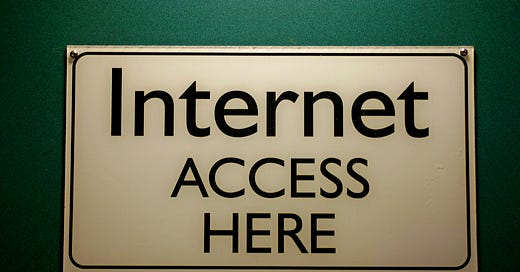There's No Acceptable Alternative: Internet for All by 2030
This isn’t merely a problem that money can solve. Funding more of the status quo responses to the digital divide won’t work.
Closing the digital divide is no longer a moonshot idea. Instead, it should be a plank in the platform of every candidate for governor. The combination of federal funding and political will has turned the lack of access to high-speed Internet across the state a solvable problem. Inaction is inexcusable. The Internet is the sort of necessity that is above politics. Democrats and Republicans alike benefit from urban and rural community members having affordable, high speed Internet.
A lack of Internet access affects Oregonians on both sides of the Cascades. Consider that at least 32,000 households in Multnomah County lack Internet access. Of those 32,000, the vast majority have incomes less than $75,000. Their lack of access is not because there’s no Internet infrastructure in place, it’s simply because they lack the financial resources to tap into Internet plans with sufficient speed. Of course, what’s true of Multnomah County is true of urban areas around the state. Thousands of Oregonians are experiencing the negative side effects of the affordability gap.
In Eastern Oregon, the access gap is a larger problem. Our current reliance on Internet Service Providers (ISPs) to build out Internet to rural areas has resulted in Internet that’s too slow and too expensive in many places and, in many more places, nonexistent. About ten percent of rural Oregonians cannot even access Internet that the 1980s would call slow.
Both the affordability gap and access gap are not complex problems. They’re also not problems the market will solve. It simply isn’t in the interest of a business to pay for people’s Internet or extend broadband networks to towns with dozens of people. In other words, every day that an Oregonian has to deal with slow or no Internet is the result of choices made by our elected officials.
The consequences of insufficient Internet access are growing. Even as “normal” life returns, much will remain online. No Oregonian can reach their full potential if they cannot easily Zoom, attend telehealth appointments, and enroll in training courses online. These are basic activities in the digital age. The longer we wait to
A new sense of urgency and a deep well of financial resources mean that now’s the time to close the divide. Thankfully, Oregon officials have already taken bipartisan steps to help address both the affordability and access gaps. But, those steps aren’t going far enough, soon enough. That’s where State and Local Financial Recovery and Capital Projects Funds come in. These two huge pools of federal dollars can make bold Internet projects possible.
However, this isn’t merely a problem that money can solve. Funding more of the status quo responses to the digital divide won’t work. We need to examine new ways to connect rural Oregonians to high speed Internet. Everything, including satellite-based Internet, should be on the table.
We also need to demand more from our ISPs, so that urban communities aren’t left with the “choice” of paying too much for too slow Internet provided by a single entity. A large part of the Willamette Valley is “captured” by Comcast, left with no alternative to whatever service Comcast provides, even if its a mere 25/3 Mbps plan. We must create more competition to lower prices and drive higher speeds.
Every Oregonian should have high-speed Internet by 2030. Any alternative is an abject failure.
Kevin Frazier edits the Oregon Way. He also runs No One Left Offline, a nonprofit focused on closing the digital divide. NOLO has worked with the City of Talent and others to help Oregonians improve their access to the Internet.
Photo credit: "Internet Access Here Sign" by Steve Rhode is licensed under CC BY-NC-ND 2.0




